L R AS Published on Monday 30 March 2020 - n° 315 - Categories:Thread of the Week
Le Fil de la Semaine n°315 of March 30th
THIS WEEK'S NEWS HIGHLIGHTS
If there were only five texts to read this week :
FRANCE
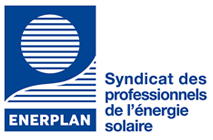 * Very important : The measures implemented in favour of businesses by the government
* Very important : The measures implemented in favour of businesses by the government
 * The President of GMPV-FFB presents his perception of the economic situation
* The President of GMPV-FFB presents his perception of the economic situation
THE FILE
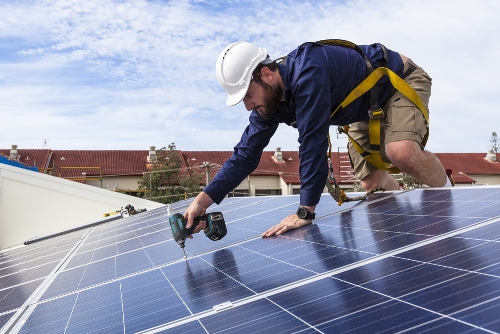 * The epidemic is affecting the renewable energy market
* The epidemic is affecting the renewable energy market
THE WORLD
 * Is the epidemic threatening solar installations in Europe?
* Is the epidemic threatening solar installations in Europe?
Other interesting articles :
FRANCE * Sun care providers not careful about what they choose?
* Sun care providers not careful about what they choose?
![]() * Total in the face of the crisis
* Total in the face of the crisis
![]() * Neoen pursues a high growth rate
* Neoen pursues a high growth rate
![]() * Voltalia: after disappointing 2019 accounts, those of 2020 will be brilliant
* Voltalia: after disappointing 2019 accounts, those of 2020 will be brilliant
![]() * RGreen Invest's perspective on the current crisis.
* RGreen Invest's perspective on the current crisis.
.
LA FILE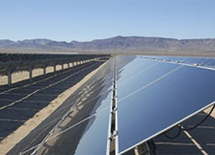 * Reducing demand would be a major threat to producers.
* Reducing demand would be a major threat to producers.
.
THE WORLD * Panel production continues in most U.S. mills
* Panel production continues in most U.S. mills
 * How Coronavirus affects the Brazilian photovoltaic sector
* How Coronavirus affects the Brazilian photovoltaic sector
.
THE PRODUCTS
* New technique to obtain lithium: filtration
.
THE COMPANIES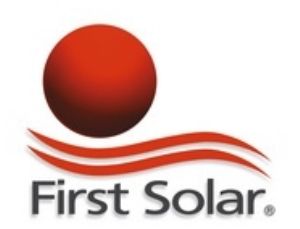 * First Solar continues to produce panels
* First Solar continues to produce panels
![]() * Canadian Solar in 2019: strong sales growth
* Canadian Solar in 2019: strong sales growth
 * How is the European energy sector reacting to the coronavirus?
* How is the European energy sector reacting to the coronavirus?
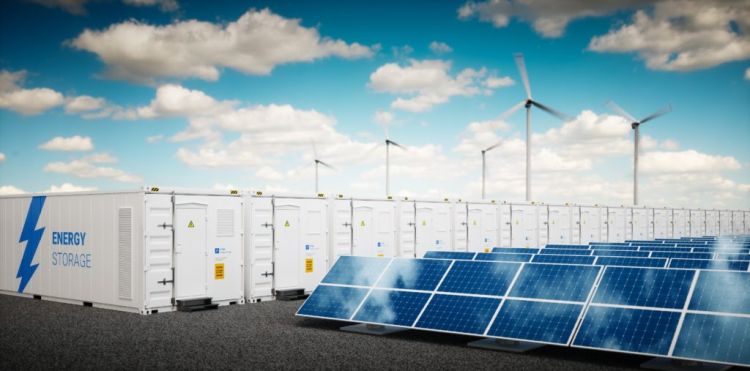 * The impact of the coronavirus on Scatec Solar's activity
* The impact of the coronavirus on Scatec Solar's activity
.
MISCELLANEOUS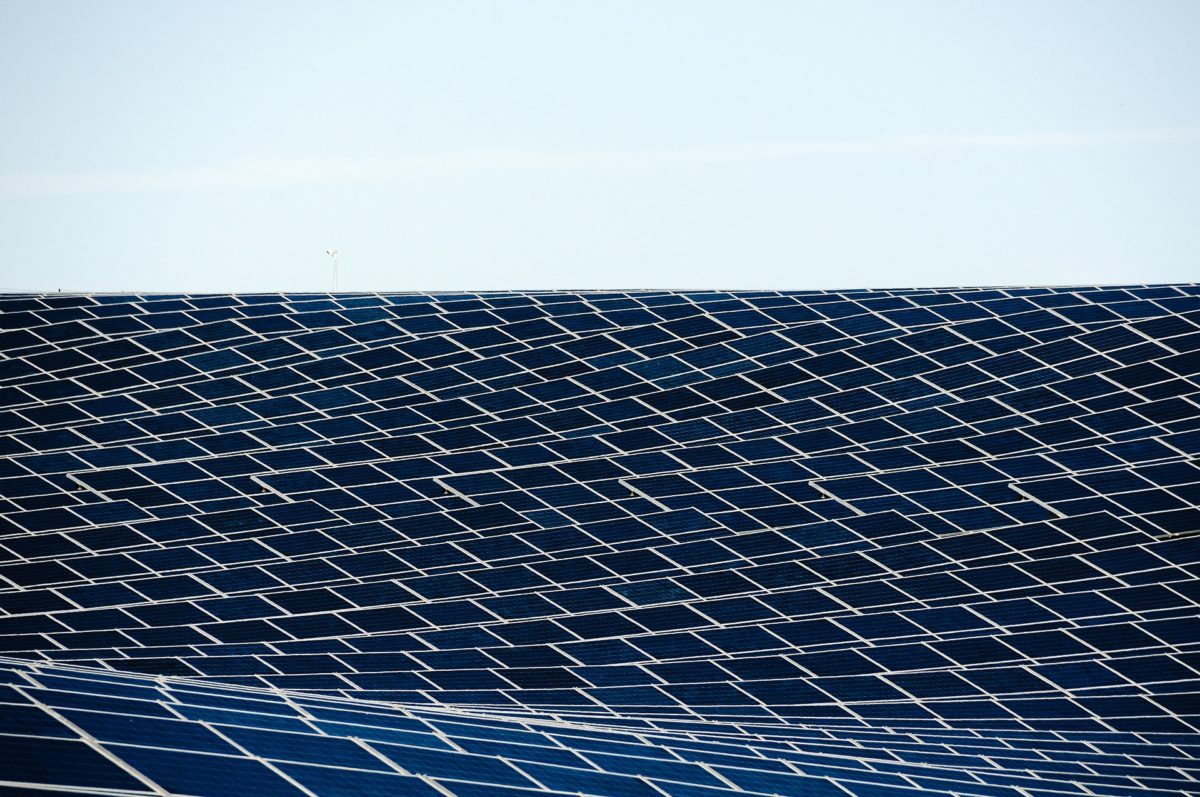 * Laying the panels in a different way
* Laying the panels in a different way
THE DEVELOPMENT OF THESE TITLES
.
FRANCE
 * Very important : The measures implemented in favour of businesses by the government
* Very important : The measures implemented in favour of businesses by the government
Very important : The measures implemented by the government in favour of companies to deal with the coronavirus.
The professional union Enerplan has created a page on its site to regularly inform professionals (and not only those in the solar sector) and for the partial continuation of their activity if necessary. On this page, the various announcements and government measures are published and will be updated as new decisions are made.
https://www.enerplan.asso.fr/covid-19-les-mesures-mises-en-oeuvre-pour-les-entreprises
In this news feed, there is the information from the Ministry of Labour for employers, with the scheme to help them decide whether or not to use the partial activity for their employees.
Enerplan of 25 March
 * The President of GMPV-FFB presents his perception of the economic situation
* The President of GMPV-FFB presents his perception of the economic situation
Franc Raffalli, president of the Groupement des Métiers du Photovoltaïque de la Fédération Française du Bâtiment (GMPV-FFB) spoke to PV Magazine about the impact of the coronavirus on the industry.
"Today, all our building sites are at a standstill. Even if we wanted to continue, we couldn't: the industry is hampered for several reasons," he says. On the production side, public orders have come to a standstill, as have the large private construction sites. "We wouldn't be able to continue working in any case, since the rental companies no longer rent out construction equipment. On some sites, the equipment is still available, but if it breaks down, no one is there to repair it. "Technically, it is therefore impossible to work. If the projects in operation are not really affected by the current situation - urgent operations are assured - then the current building sites are suspended. Foreign subcontractors have returned to their countries, and the transport of materials has slowed down, making the supply of materials difficult.
The research and sales activity adapted to teleworking is operational. However, "it is difficult for the commercial services to work efficiently since it is impossible to predict what will happen in the coming months. »
The sector is facing a contradictory political discourse After hearing Emmanuel Macron's speech, which asked everyone to stay at home, the building and public works sector understood that it was necessary to stop going on building sites", explains Franc Raffalli. How can we continue working on the sites while guaranteeing the safety of the employees? Thus, on Monday 16 March, total confinement was planned: teleworking for the backoffice and stopping work on the sites. "The Prime Minister had also specified that everyone would be on short-time working, and therefore compensated," emphasises the president of the FFB's photovoltaic branch. "In the building industry, we considered ourselves to be a "non-essential" sector," he adds. However, the Minister of Labour, Muriel Pénicaud, does not see it in the same way, and enjoins the BTP to take over the building sites. "In the middle of the week, the tone changed," adds Raffalli. According to the Regional Directorates of Companies, Competition, Consumption, Labour and Employment (DIRRECTE), partial unemployment was not conceivable in the branch. Because of this cacophony, the FFB launched an appeal to the government: a request for a ten-day halt to construction sites so that the sector could get organised.
"The situation is unclear, no precise instructions have been given". Today, even if an amendment specifies that the partial unemployment scheme can be granted to all companies, a thaw of the building sites is wished and envisaged. "Construction and public works companies are essential to the economic life of the country and to its functioning. It is therefore necessary to work to continue their activity, to avoid a total stoppage of the building sites, which would destabilise not only the companies concerned but also the State.This would destabilise not only the companies concerned but also the entire economic chain", explains the press release drafted jointly by the government, the FFB, Public Works and the Confederation of Crafts and Small Building Companies (CAPEB).
"The recovery will be gradual, depending on the building sites," says Franc Raffalli. Some equipment suppliers, such as Saint Gobain, have already announced their reopening by developing their service to professionals.
In terms of the supply of photovoltaic panelsThe lack of panels was felt before the crisis in France, when factories were closed in China," explains Franc Raffalli. The French projects then had to be postponed from 15 days to 3 weeks. "But production is slowly resuming over there and, when construction sites resume in France, production in China will be more effective, the largest markets will probably have been delivered. The panels will be available for the French yards. »
Faced with the current difficulties, however, Franc Raffalli puts things into perspective. "In the photovoltaic sector, the companies that have survived the last ten years are not going to collapse after this period of shutdown. It's not going to put them on the ground," he concludes.
https://www.pv-magazine.fr/2020/03/23/covid-19-quel-impact-sur-les-chantiers-photovoltaiques/
PV Magazine of March 23rd
 * Sun care providers not careful with What to choose?
* Sun care providers not careful with What to choose?
In terms of energy renovation, UFC-Que Choisir received 4,000 disputes between private individuals and companies in 2019. Consumers have complained about the practices of certain companies. Some providers generate ten times more complaints than the average of 3.5 per company.
All these providers use more or less the same marketing methods, which often amount to deceptive and unfair practices. It usually starts with telephone canvassing, where the telemarketer insists on making an appointment with the prospect. The salesperson then deploys all his or her talents, from dreamy profitability calculations to impressive promises of return, the assurance of receiving assistance or high income. Obviously, this is unrealistic, but the household is won over immediately. He signs.
Once he has come to his senses, cancelling the order is not so simple. Cancellation slips may be missing, or contracts may be backdated. And this is often the moment when he discovers that he has taken out a loan, which the salesman was careful not to tell him about.
Below is the list of companies that cause the most disputes in the field of energy renovation, drawn up by Que Choisir?
TECHNITOIT
GROUP SOLAR
ECONOMIC OBJECTIVE
FUTURE ENERGY (MEDIA SYSTEM)
SIBEL ENERGIE (NJCE)
ENVIRONMENT (HD ENERGY PRODUCTION)
FRANCE PAC ENVIRONNEMENT
BT CONCEPT-ECO
FRENCH AGENCY FOR ENERGY TRANSITION (AFTE)
ECO-ENERGY SOLUTION (SOLECO)
SVH ENERGY
SWEETCOM
CAP SUN ENERGY
EUROPE ENVIRONMENT COUNCIL
ECO GROUPING
Tecsol of March 26th
 * Total in the face of the crisis
* Total in the face of the crisis
"Total is facing three simultaneous crises," said CEO Patrick Pouyanné: the coronavirus, the collapse of oil prices and climate change. Faced with these challenges, the company is "taken to task" in the media to play a more positive role in the energy transition.
Total had budgeted $60 a barrel for oil. If prices were to remain at $35 for the rest of the year, the company would lose $9 billion, the CEO said. At the time, Brent crude was trading at $25, after spending the best part of a week below $30. To make up for the foreseeable loss, Total will reduce its annual spending by 20%. However, it seems that Total's commitment to the energy transition will not be immediately affected, because according to the CEO, "Total's "new energy" activities will benefit from a reduction in the cost of energy production.Thus, Total continues to deploy a major expansion of energy storage manufacturing through its subsidiary Saft, in partnership with the car manufacturer Opel.»
Total is preparing to produce energy storage batteries via its Saft subsidiary, in partnership with the car manufacturer PSA.
GreenTech Media of March 23rd
 * Neoen pursues a high growth rate
* Neoen pursues a high growth rate
Neoen added 369 MW of new installed capacity, reaching 1.85 GW in 2019 (+25%). It has 1.2 GW under construction at the end of 2019 (+56%). It won 1.1 GW of new projects. The total portfolio of projects amounts to 10.7 GW, up 3 GW compared to the end of 2018. Turnover in the solar business (47% of total turnover) increased by 48% compared with 2018 thanks to the plants commissioned.

EBITDA margin (ebitda) stood at 85% of consolidated sales, compared with 80% in 2018. At the end of 2019, the company had cash and cash equivalents of €460 million.
460 million in 2020, Neoen expects to achieve EBITDA of between €270m and €300m at constant exchange rates (+25% to +40% over 2019), i.e. a margin of around 80%.
For the end of 2021, the group confirms its target of 5 GW in operation or under construction. The €400m Ebitda is unlikely to be achieved due to the Coronavirus epidemic, which is delaying the launch of certain projects.
By the end of 2022, in three years, the facilities in operation will exceed 5 GW (compared with 1.8 GW at the end of 2019, i.e. a near tripling) and will exceed €400m in EBITDA (i.e. a doubling).
The company of 25 March
 * Voltalia: after disappointing 2019 accounts, those of 2020 will be brilliant
* Voltalia: after disappointing 2019 accounts, those of 2020 will be brilliant
The company had obtained high prices on its energy deliveries in 2018. This was not repeated in 2019, resulting in lower sales, EBITDA and net profit. Excluding the impact of these items, sales would have increased by 23% and EBITDA by 16%. More encouraging is the installed capacity of the power plants in operation (mainly in the second half of 2019) of 154 MW (up 29%), bringing the portfolio in operation to 678 MW at the end of 2019 and 717 MW at the end of February. Turnover and accounts for 2020 are expected to be bright.
The company has a cash position of €270 million at the end of 2019, after the €376 million capital increase in July 2019.
The group :

The sale of energy :the services :


The 2020 ambitions are maintained despite a less stable environment due to the coronavirus. The capacity in operation at the end of February is 717 MW; 357 MW should be completed by the end of 2020. The objective of 1 GW in 2020 is maintained. To this will be added 0.5 to 1 GW of activity under management. As a result, EBITDA (ebitda) of €65 million should reach €160 to 180 million by the end of 2020 (including €111 million from the portfolio in operation). Growth will rise from 146% to 177% in one year. These are the forecasts, but the coronavirus could delay the supply of components and therefore the completion of construction.
The company plans to double assets in operation or under construction by the end of 2023, from 1.22 GW at the end of February 2019 to 2.6 GW, i.e. in four years. There should be no capital increase between now and the second half of 2021. EBITDA is expected to reach €275 to 300 million (+70% by the end of 2020) in three years.
The company of 23 March
In 2019, RES commissioned two 19 MW PV plants. 14 building permits have been filed for a total of nearly 170 MW of projects. All the projects submitted to the Energy Regulatory Commission's calls for tenders (6 projects for a total of nearly 50 MW) were successful. RES also finalised the financing and sale of 46 MW of solar assets, in accordance with its usual business model of asset manager-operator. In 2020, the company expects to submit permit applications for 350 MW of projects and the sale of 40 MW of projects. »
In the area of storage, RES obtained its first authorisation for the installation of a battery energy storage plant in 2019. The company was also named winner of RTE's long-term call for tenders for the contracting of new capacity for two energy storage plant projects of 30 MW each.
RES was awarded the management delegation for two non-developed parks, bringing the portfolio under management to 700 MW of wind and solar power. RES's ambition is to triple its turnover from this activity over the next three years.
Plein Soleil on 24 March
PV Magazine interviewed Nicolas Rochon, the chairman of the investment company RGreen Invest
RGreen Invest's activity consists in financing or investing in green electricity production projects. A large majority of the projects have fixed price conditions and guaranteed volumes, even in the event of a drop in market electricity prices.
The current crisis is unprecedented but RGreen believes that it will not upset the fundamentals of its sector: long-term investments in essential infrastructure that will become even more essential.
We can try to anticipate some consequences for this sector. The serious sanitary crisis and the confinement will lead to a brutal drop in economic activity. The impact will be all the more important as the economic systems are already significantly indebted:
- The collapse of oil prices is probably temporary. We believe that the general deployment of capital towards decarbonised industry will accelerate. This effect will be increased by the consequences of social change, on mobility, working methods, location and dependence on productive tools.
- The falling demand for electricity has logically resulted in a fall in spot prices on all European markets over the last few months. We believe that the level of spot electricity prices will recover fairly quickly to pre-crisis levels. We will continue to maintain our preference for projects benefiting from fixed and guaranteed electricity sales contracts and to be vigilant in terms of the exposure of our portfolios to market prices.
- Market players: a°) Manufacturers, builders and operators will suffer from a delay in activity. Some players, notably wind or solar manufacturers, may need to be consolidated. b°) Developers will face a drop in activity and probably revise their selling price requirements downwards. RGreen will pay attention to the investment opportunities likely to emerge in the short term, due to the anticipated lack of liquidity.
- The financial aspect: there is the setting up of mechanisms to maintain liquidity with monetary and fiscal stimulus. Key interest rates are likely to remain at their historical lows for quite some time. However, it cannot be excluded that a reduction in commercial banks' liquidity will lead to an increased focus on their strategic clients and an increase in trading margins. Interest rate hedging strategies for our investments will always be systematically favoured. We give ourselves the right to revise our inflation forecasts in the coming months. It is not impossible that in this new market we may be able to increase our margin requirements.
The power stations in operation are running and producing green electricity. Projects under construction are likely to suffer from (1) delays in implementation due to delays in the delivery of panels or wind turbine components and (2) the halting of construction sites (precautionary principle). The regulatory authorities have already warned that force majeure would be used to effect implementation delays without penalty. At the same time, we note a desire on the part of the French government to encourage the resumption of work on building sites. »
PV Magazine of 27 March
.
.
THE SUBSIDIARY * The epidemic affects the renewable energy market
* The epidemic affects the renewable energy market
Through corporate clients, the epidemic is affecting the renewable energy market. For the moment, we are beginning to perceive slowdowns in the rest of the economy, resulting in a few plant closures and the unemployment of staff. Already, restaurants and large supermarkets are closing down, stopping all energy deliveries and reducing orders for new installations. The looming recession will lead to a drop in energy consumption. This is the current concern of supplier-developers.
The demand for solar and wind power has been the driving force behind a strong push in the renewable energy market. It has been stimulated by federal tax credits. It is hoped that the factors that have stimulated RE will continue, such as cheap solar and wind energy, volatility in the fossil fuel market, and customer, investor and employee demand for decarbonisation.
Even if these factors remain, a recession would reduce demand (it has fallen by 25% in Germany). Added to this would be the lack of solvency of companies, and of course increased competition from fossil fuels after their prices have fallen.
For the time being, electricity companies are indeed seeing a reduction in demand. Observers are monitoring demand trends in Texas to gauge what a collapse in oil prices will cause. Electricity demand may rebound quickly after the end of the epidemic, or the crisis may have had a lingering effect.
GreenTech Media of 25 March
 * Coronavirus stops the conclusion of energy supply contracts
* Coronavirus stops the conclusion of energy supply contracts
Part 1
"With the fall in the spot price of electricity on the European market, there is hardly any business model left without subsidies," according to Enerdis from Germany. "The current situation means that all projects have to be put on hold.
We don't know how the price of electricity, which depends on demand, will develop, and how CO2 and gas prices willdevelop in the coming months.
Projects that have to obtain authorisation procedures and access to the network are likely to encounter difficulties due to a lack of staff in the administrative services and network operators. "To date, no one can predict the scale of this event for the global economy. But there will certainly be disruptions".
Even solar projects with signed PPAs could face problems, especially those due for completion this year. "The closure of industries in China could lead to delays in the delivery of products. The consequences for many projects currently under construction are obvious".
Lux Research says that initial projections indicate a 20% drop in global oil demand, the second such drop in history, following the 1980 Iranian revolution. But by the end of the year, there was only a 5% drop in demand.
Enervis recently reported that power purchase agreements (PPAs) signed in Europe so far had reached 8.4 GW, of which 4.4 GW in Spain, 1.9 GW in Italy, 1.1 GW in Germany, 0.4 GW in Portugal, 0.3 GW in Denmark, 0.16 GW in France.
PV Magazine of 25 March
 Coronavirus stops the European market for energy supply contracts
Coronavirus stops the European market for energy supply contracts
Part 2
The coronavirus stops the European market for energy supply contracts, according to the director general of the Spanish company AleaSoft
This epidemic has the effect of stopping all funding of unsubsidised solar projects until reliable price forecasts can be made. This is because the price of electricity can fluctuate and not remain high all the time. Moreover, the immediate consequence for the non-subsidised secondary market is a fall in the price of power plants, due to lower spot and forward energy prices.
The market is characterised by a drop in demand for electricity and a collapse in fuel prices. Large energy consumers could buy projects or power plants while this discourages investors and producers.
The riskiest PV projects are those with a short-term vision and those whose developers have difficulty finding financing. Projects left without financing will eventually be sold. "Large investment funds are preparing to enter the PV sector to buy cheaply," because they can afford it.
"This crisis will benefit from bank liquidity, which is a big difference from the 2008 crisis.
PV Magazine of 26 March
 * Demand reduction would be a great threat to producers
* Demand reduction would be a great threat to producers
Falls in demand, rather than supply problems, could be the biggest threat to the solar and energy storage industries, according to IHS Markit.
Automotive and solar + storage customers may experience delays in the supply of battery cells from China, which produces 70% of the world's capacity. There would only be a delay in the availability of the finished product. On the other hand, the drop in demand represents the greatest threat to the storage industry, as the absence of new battery orders would cause manufacturers to under-activity. Large inventories can also drive down the prices of stationary batteries.
The quarantining of the population will disrupt the solar + storage facilities, as households will face uncertainty about their income. Residential storage facilities in the second quarter of 2020 are expected to decline by 10% to 15% according to IHS Markit. This will affect businesses: commercial and industrial investments in energy storage are expected to suffer.
Grid storage is likely to be the least affected by the current crisis. Investments are expected to continue, sometimes with delays. If the epidemic cannot be stopped, the consequences could be more serious.
In the solar industry, as with energy storage, lower demand is likely to be more costly in the long term than supply problems. The production of panels and inverters is expected to be lower than forecast for 2020, due to the interruption of the epidemic in the first half of the year. However, it is the drop in demand following the virus in Europe, the United States and India that is of greater concern.
"While manufacturing has gradually returned, international demand has stalled alarmingly," said IHS Markit. "The industry fervently hopes that this is due to practical constraints caused by logistical problems and labour shortages, rather than a longer-term pattern".
PV Magazine of 25 March
.
.
THE WORLD * Is the epidemic threatening solar installations in Europe?
* Is the epidemic threatening solar installations in Europe?
Experts and investors say Europe's solar renaissance should continue to flourish in the long term despite the impact of the coronavirus and falling electricity prices.
The example of Spain's 300 MW Talayuela power plant is instructive. This power plant has a purchase contract (PPA) covering 10 years and 75% of the production, with the rest to be sold on the market. The epidemic is slowing the pace of construction, but this is nothing compared to the 20-30 year lifespan of this plant. The client agreed to a delay of two months.
The industry is adapting to the travel ban and the requirement for distance between workers. The cost of the panels is falling as Chinese production lines are picking up speed, while there are fewer buyers.
The challenge of declining demand and electricity prices Spain installed 4.9 GW in 2019 and could install the same amount in 2020. The other European countries should all post good figures this year as well. A large proportion of solar projects in Europe are not subsidised and are the result of negotiations with buyers or market prices. Lower electricity prices in the short term make it harder to make the investment case. Buyers will always want a discount of 10-20% in purchase contracts on the price of electricity from the grid. Therefore, in the short term, there could be clauses in the contracts to take account of this short-term drop in prices. In the medium and long term, interest in solar energy without subsidies in Europe seems to persist. The investment bank Augusta & co believes that solar projects could shine in a weakened global economy. It argues that infrastructures that can offer long-term returns become more attractive in times of uncertainty. In previous economic downturns or shocks, there has been an increase in capital flows. That said, the bank recognises that downward pressure on electricity prices is making conditions more difficult for marginal, unsubsidised markets such as the UK. On the other hand, as in Spain, where solar prices are well below spot prices, investment will continue to look attractive.
"In the future, there will be far more capital wanting to invest in renewable energy in Europe than there are opportunities. For the past five to eight years it has been a seller's market. In countries like Spain there is more capital than projects. »
Foreign investors are arriving and increasing the interest of the oil companies, although the fall in oil prices is reducing their investment capacity.
"The level of uncertainty is extraordinary. The good news is that the promotion of energy transition - whether you do it for reasons of energy security or environmental security - continues to enjoy strong momentum. The momentum that has driven this industry in recent years is still very much in place.
GreenTech Media of March 27
Panel production continues in most US factories, despite restrictions on coronavirus. The solar industry has called its workers "essential" in the face of state, city or county shutdown orders. These orders allow only essential workers to continue outside the home. All areas of the United States where solar power plants are located report cases of coronavirus. Yet factory managers have made a variety of decisions about whether to continue production: employees at the factories operated by JinkoSolar, Heliene, Hanwha Q Cells, SunPower and Silfab continue to report for work. Only Tesla and Solaria have closed down.
The United States now has more reported cases of coronavirus than any other country in the world, with around 86,000 cases on Friday afternoon 27th and nearly 1,300 deaths.
GreenTech Media of March 27
The Brazilian consultant Greener interviewed 541 companies, 75% of which are system integrators. Many of these players are already feeling the impact of the crisis: 71% of the companies surveyed have already lost orders either by withdrawal or postponement, while 85% have already noted a reduction in demand for photovoltaic systems. Around 70% of companies now have their employees working from home.
Above all, 50% of companies have already been affected by an increase in PV system costs due to the fall in the Brazilian currency in recent weeks. Around 49% of respondents expressed concern about the rising prices of PV systems.
Other concerns included logistical problems (23%), the availability of PV systems on the market (17%), grid connection problems (12%), powering of PV modules (11%) and powering of inverters (8%).
For large power plants, 60% of investors and developers were affected by an increase in the cost of equipment.
PV Magazine of 27 March
.
.
THE PRODUCTS
* New technique to obtain lithium: filtration
Researchers at Monash University have made a discovery that will significantly reduce the time it takes to extract lithium from brine. They have developed an innovative new filtration method based on the extraordinary sieving capacity of a living cell.
They then used a synthetic membrane that mimics the filtration ion channels. It is tuned in size and chemistry to "ion selectivity", which means that lithium ions can be rapidly filtered in a unidirectional selective manner. This revolutionises the way in which lithium is extracted from brine. It takes several hours to filter, instead of months or years.
This method recovers 90% of the lithium instead of 30% with the current solar evaporation process.
https://www.pv-magazine.com/2020/03/27/australian-researchers-make-lithium-extraction-breakthrough/
PV Magazine of 27 March
.
.
THE COMPANIES * First Solar continues to produce panels
* First Solar continues to produce panels
First Solar's Ohio plants are licensed to operate during the outbreak. The company has confirmed that manufacturing operations continue at its other global plants in Kulim, Malaysia and Ho Chi Minh City, Vietnam, despite government restrictions in both countries. For the time being, the company maintains its 2020 forecast: deliveries of 5.8 to 6.0 GW (70% sold to third parties) and sales of $2.7 to 2.9 billion
The continued production of panels is essential for First Solar, which has refocused on manufacturing and is considering whether to discontinue or divest the power plant developer-builder business. The company wants to limit itself to delivering its panels to user-builders (EPCs).
GreenTech Media of 26 March
NDLR Producing is good because the order book is full. But you have to find buyers who have the use of the panels and the means to pay for them. What will happen to First Solar if the installation work stops? Will the company be able to persist in its line of development or will it have to change its forecasts?
 * Canadian Solar in 2019: strong sales growth
* Canadian Solar in 2019: strong sales growth
Sales amounted to $3.2 billion, down 17%. However, the company delivered 8.6 GW in 2019, i.e. 30% more panels in 2018. They are 74% multi-crystalline and 26% monocrystalline panels. They were sold mainly in Brazil, the United States, Australia, Japan and China. The company relies on improved multicrystalline, which reduces its production costs and enables it to achieve one of the highest profit margins in the industry. It has even achieved a cell conversion rate of 23.8% with a large surface area N-type multicrystalline cell.
Net profit came to $172 million (-28%).
Canadian Solar's pipeline was 15.4 GW as of January 31, 2020. This amount breaks down into order backlog (3.7 GW) and projects (11.6 GW). The vast majority of these projects are in the Americas, with a slight increase in the north.
In 2020, Canadian Solar will increase its production capacity for ingots to 2.3 GW (+27%), cells to 10.1 GW (+5%), and panels to 16 GW (+23%).
For 2020, panel shipments are expected to reach 10 GW to 12 GW (+16% to +40%), with a turnover of $3.4 to $3.9 billion (+6 to +25%).
PV Magazine of 27 March
 * How is the European energy sector reacting to the coronavirus?
* How is the European energy sector reacting to the coronavirus?
Europe's electricity giants are grappling with the demanding challenge of protecting staff, keeping the lights on and contributing to relief efforts - while pursuing their own energy transition plans. Some companies, including Ørsted and Total, have set up dedicated task forces to deal with the ever-changing circumstances.
The energy sector "will not be hit as hard as other industries, but it cannot hope to escape the crisis unscathed," said E.ON's CEO. Energy consumption by industry will be much lower. Its turnover will fall. This could cause some infrastructure projects to be postponed.
EDF has announced that its nuclear energy production forecasts will be revised downwards. As staff numbers and operations are limited by the country's strict traffic restrictions, EDF will be forced to revise its planned maintenance schedule and planned shutdowns.
In the UK, EDF's controversial nuclear project at Hinkley Point C has cut its construction staff by half. It is leaving 2,000 to complete work already underway.
One risk that could materialize is the delay of public tenders and labour shortages in the public agencies that administer them. "We remain dependent on public authorities to advance the authorization and consent of awarded projects and development sites, and to advance the development of regulatory frameworks, including tendering and auctions," Ørsted said.
As the virus proliferated for the first time in Europe, networks were soon limited to essential work. Smart metering installations were suspended. Declining energy demand is leading to an increasingly clear surplus of electricity in the short to medium term, and therefore to increasingly frequent negative prices.
GreenTech Media of March 25
 * The impact of the coronavirus on Scatec Solar's activity
* The impact of the coronavirus on Scatec Solar's activity
Scatec Solar has taken stock of the impact of the coronavirus on its business: Power plants in operation will continue to produce as much electricity as the world needs. The epidemic will have no influence. Production will be in line with forecasts, as these plants are monitored remotely.
The situation is different for projects and construction: Travel constraints and local regulations introduced in response to the pandemic have started to affect the construction, commissioning and testing of some of the new solar power plants. It is too early to specify the effect of these measures on construction completion dates. Deadlines are generally relaxed in Germany and France. The company is taking measures to protect staff, to limit the spread of the virus and to ensure the operation of the plants.
PV Magazine of 25 March
.
.
MISCELLANEOUS * Laying the panels in a different way
* Laying the panels in a different way
A research team in the US has proposed a 'dual-angle solar harvesting' method that could help PV developers optimise energy efficiency and land use. This solution would be particularly suitable for cloudy climates and high latitudes.
The idea is to build large power plants with two tilts of panels. The resulting loss of energy production would be more than compensated for by a smaller row of panels and therefore lower land and labour costs. This solution is not suitable for all power plants.
Adjusting 40% of the panel rows in Ohio to a secondary tilt angle resulted in a 10% efficiency gain. In California, adjusting the tilt angle of 80% of the rows resulted in a 20% gain, but required significantly more on-site labour and therefore increased costs. It was in Ohio that the concept showed interest.
PV Magazine of 24 March
.



 *
*  *
* 
